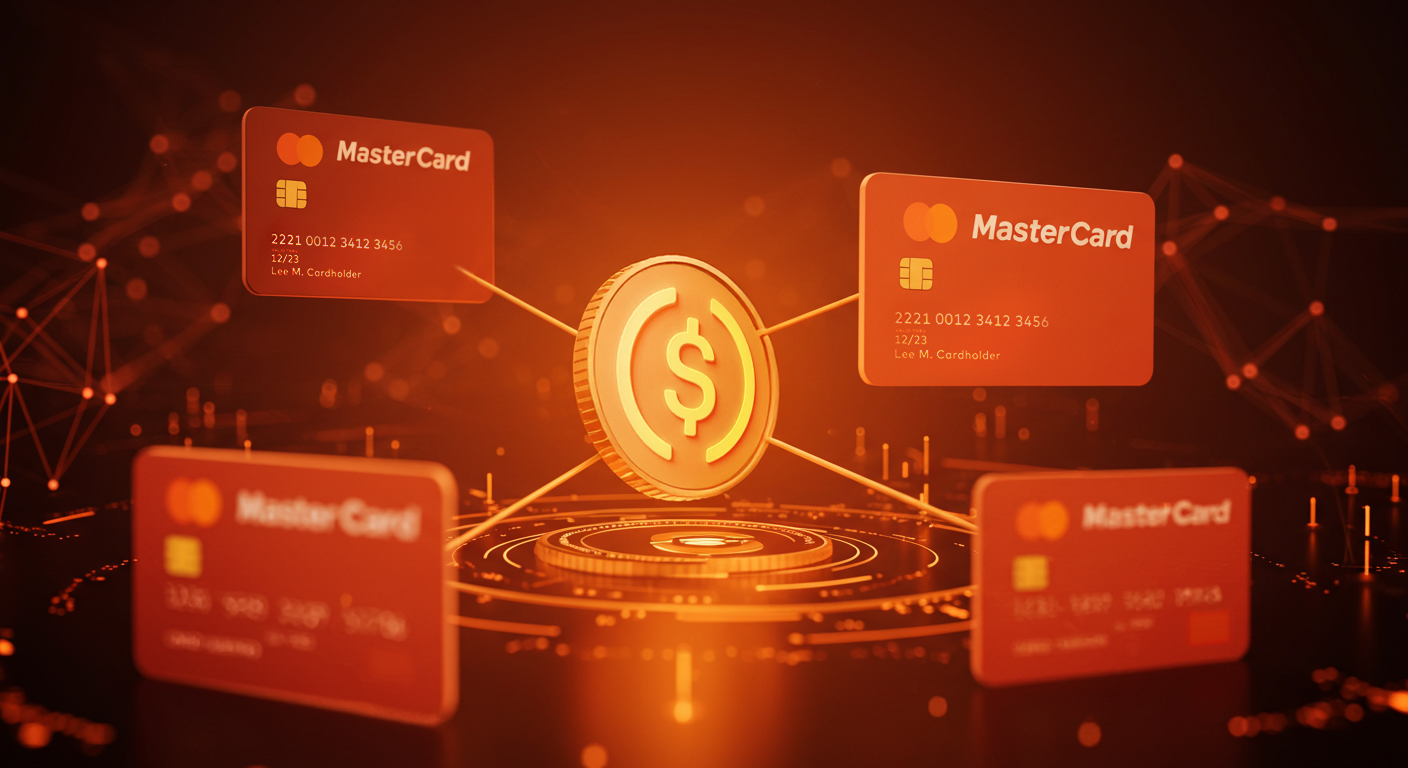Stablecoin Adoption and the Future of Payments


Mastercard’s Innovations Are Accelerating Stablecoin Integration in Global Transactions
Stablecoins are digital currencies pegged directly to traditional fiat currencies, typically the US dollar. They have emerged as a viable option for financial institutions and businesses looking to simplify cross-border transactions.
Unlike traditional cryptocurrencies, stablecoins offer predictable value and reliability, crucial attributes for treasury teams managing global payments. Mastercard’s recent efforts highlight a shift toward mainstream stablecoin acceptance.
Here’s what corporate treasury professionals need to understand.
Key Terms to Know:
- Stablecoin: A type of cryptocurrency whose value is directly tied to a stable fiat currency, such as the US dollar, providing price stability compared to traditional cryptocurrencies.
- Blockchain: A secure, decentralized digital ledger technology that records transactions across multiple computers, ensuring transparency and security.
- Crypto Credential: Mastercard’s innovative system that replaces complicated blockchain wallet addresses with easy-to-use usernames, streamlining transactions and reducing errors.
- Merchant Settlement: The process by which funds from customer payments are transferred to the merchant’s account, often involving currency conversion in cross-border transactions.
- Fiat Currency: Traditional government-issued currency (like USD, EUR, or GBP), whose value is backed by the issuing government rather than physical commodities.
Why Stablecoins Are Relevant for Treasury and Payments
Legacy cross-border payments often involve slow processing, high transaction fees, and limited transparency. Stablecoins utilize blockchain technology to deliver significant advantages:
- Reduced volatility: Pegged to stable fiat currencies, stablecoins provide predictable value.
- Instant settlements: Payments clear immediately, improving liquidity management and operational efficiency.
- Cost savings: Lower fees compared to traditional payment methods such as wire transfers and correspondent banking.
It should be noted: stablecoins still face adoption challenges, including complex wallet systems, fragmented access points, and limited merchant acceptance. Mastercard aims to overcome these challenges with targeted solutions.

What’s Significant: Mastercard Takes a Strategic Approach to Stablecoin Integration
Mastercard is implementing several strategic initiatives designed to simplify stablecoin use and accelerate business adoption:
- Simplified Crypto Credentials
Mastercard introduced the Crypto Credential solution, replacing complex wallet addresses with user-friendly usernames. This simplifies transactions, minimizes errors, enhances compliance checks, and streamlines stablecoin usage for businesses. - Integration into Traditional Payment Networks
Mastercard collaborates with crypto exchanges to enable stablecoins on traditional payment cards. This initiative lets cardholders spend stablecoins at over 150 million global merchant locations and convert stablecoins back to fiat currency seamlessly. - Direct Merchant Settlement
Through partnerships with stablecoin issuers like Circle (USDC) and Paxos, Mastercard provides merchants with direct settlement options in stablecoins. This capability reduces settlement complexities, offers immediate liquidity, and shortens payment cycles for businesses.
Collectively, these Mastercard initiatives address key obstacles to stablecoin adoption, helping businesses streamline their cross-border payment processes.
Implications for Treasury Teams
Corporate treasury and finance teams should proactively monitor developments in stablecoin technology and consider potential operational benefits. While mass adoption is not yet widespread, awareness and preparation can position treasury teams advantageously as stablecoin usage grows.
Actionable steps treasury professionals can take now include:
- Assess Current Payment Processes: Identify inefficiencies in international payment workflows that stablecoins might resolve.
- Stay Informed on Regulatory Changes: Regularly track regulations affecting digital currencies to maintain compliance and readiness.
- Engage with Financial Providers: Communicate with banking partners and payment providers to remain updated on emerging stablecoin integrations.
Preparing for the Future
Mastercard’s investment in stablecoin solutions indicates a broader industry movement toward digital asset integration within established payment systems. While immediate adoption is limited, treasury teams should recognize the long-term potential of stablecoins. Remaining informed and prepared ensures companies are positioned strategically when stablecoins become a standard part of global payment infrastructure.
If your treasury or payments team has additional questions or would like to begin the process of analyzing, reviewing, and strategically adjusting your systems, please reach out to the Redbridge team.